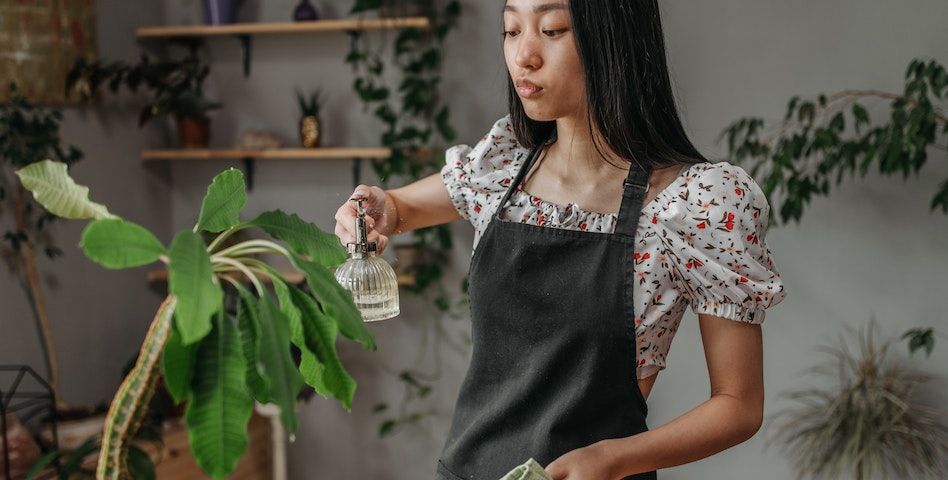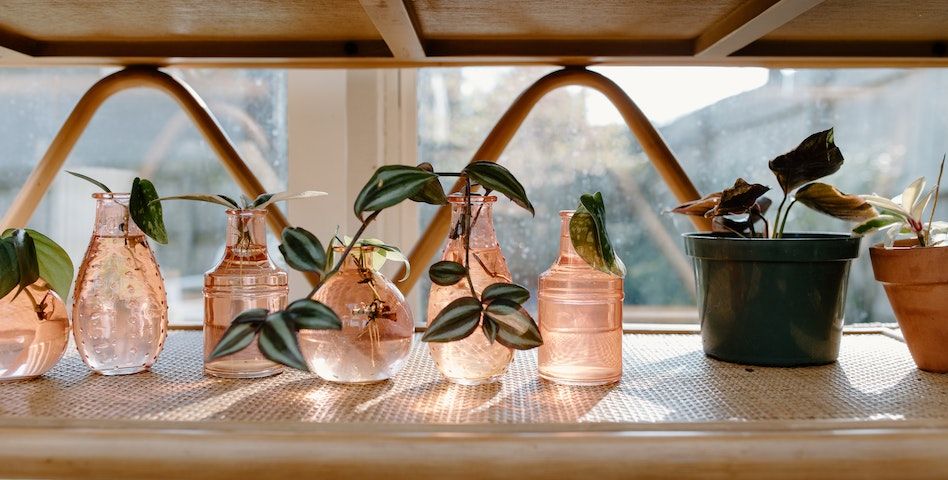Read in 3 minutes
Watering indoor plants may seem like a straightforward task, but it's an aspect of plant care that often requires more attention than we think. Overwatering or underwatering can lead to various issues, from root rot to parched leaves. To help your indoor plants thrive, it's crucial to understand the right way to water them. In this blog, we'll explore the best practices for watering your indoor green companions.
Assess Plant Needs: Know Your Plants
Different indoor plants have varying water requirements. Before you water, familiarize yourself with the specific needs of each plant species in your collection. Some plants prefer consistently moist soil, while others thrive in drier conditions. Understanding these differences is the first step in proper plant care.
Check Soil Moisture: The Finger Test
The finger test is a simple yet effective way to gauge soil moisture. Insert your index finger into the soil up to your second knuckle. If the soil feels dry at that depth, it's time to water. If it's still moist, hold off on watering for a few more days. This method prevents overwatering, a common cause of plant problems.

Use the Right Watering Technique: Top-Down vs. Bottom-Up
There are two primary techniques for watering indoor plants: top-down and bottom-up.
Top-Down Watering
This is the most common method. Simply water the plant's soil surface until you see water coming out of the drainage holes at the bottom of the pot. Be sure not to flood the plant; water it evenly until the excess water drains away.
Bottom-Up Watering
This technique involves placing the pot in a saucer filled with water and allowing the plant to absorb moisture from the bottom. It's a useful approach for plants that are sensitive to water on their leaves, like African violets.
Use Room Temperature Water
Avoid using extremely cold or hot water on your indoor plants. Room temperature water is ideal as it prevents shocking the plant's roots. If you're using tap water, let it sit for a while to allow any chlorine or fluoride to dissipate before watering.
Some More Ideas!
Watering Frequency: Listen to Your Plants
Instead of adhering to a rigid watering schedule, pay attention to your plants' cues. Some signs that a plant may need water include wilting leaves, dry soil, or a lightweight pot. However, it's important not to wait until a plant is severely stressed before watering.
Drainage is Key: Use Well-Draining Pots
Proper drainage is essential for the health of indoor plants. Ensure that your pots have drainage holes at the bottom to prevent water from accumulating and causing root rot. Use well-draining potting mix to encourage proper water flow through the soil.
Avoid Standing Water: Empty Saucers
After watering, empty the saucers under your pots to prevent the plant from sitting in standing water. This reduces the risk of root rot and fungal issues.
Use a Watering Can with a Fine Nozzle
A watering can with a fine nozzle helps distribute water evenly and gently. This prevents soil erosion and minimizes disturbance to the plant's roots.
Consider Humidity Levels
Indoor plants can be sensitive to humidity levels in your home. If you notice that your plants' soil is drying out quickly or their leaves are browning at the edges, it may be due to low humidity. Consider using a humidity tray, a humidifier, or misting your plants to increase moisture in the air.
Adjust Watering During Seasons
Indoor plants may require different watering patterns during different seasons. In the winter, when indoor heating can dry out the air, you may need to water less frequently. Conversely, in the summer, when the air is more humid and plants are actively growing, you may need to water more often.
Fertilize Wisely: Water Before Fertilizing
When it's time to fertilize your indoor plants, it's best to water them a day or two before applying fertilizer. This ensures that the plant is adequately hydrated and better able to absorb the nutrients from the fertilizer.
Monitor Plant Health: Keep an Eye Out
Regularly inspect your indoor plants for signs of both overwatering and underwatering. Yellowing leaves, mushy stems, or a musty odor may indicate overwatering, while dry, crispy leaves suggest underwatering. Adjust your watering routine accordingly.

Conclusion: Nurturing Your Indoor Oasis
Watering indoor plants is a fundamental aspect of plant care, and doing it right can make a significant difference in the health and vitality of your green companions. By understanding your plants' specific needs, using appropriate techniques, and adapting your watering routine to seasonal changes, you can create an optimal environment for your indoor oasis to flourish. Remember, a little attention and care go a long way in nurturing your indoor plants and enhancing your living space with their beauty and vitality.